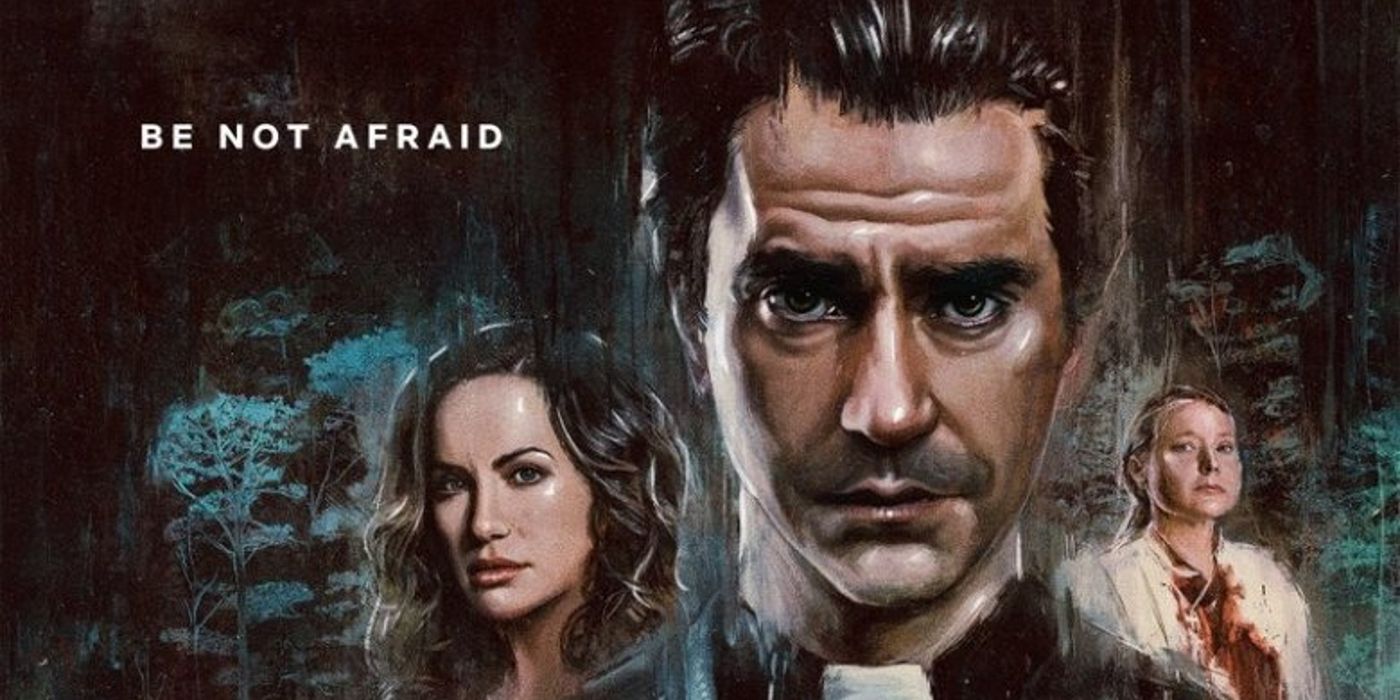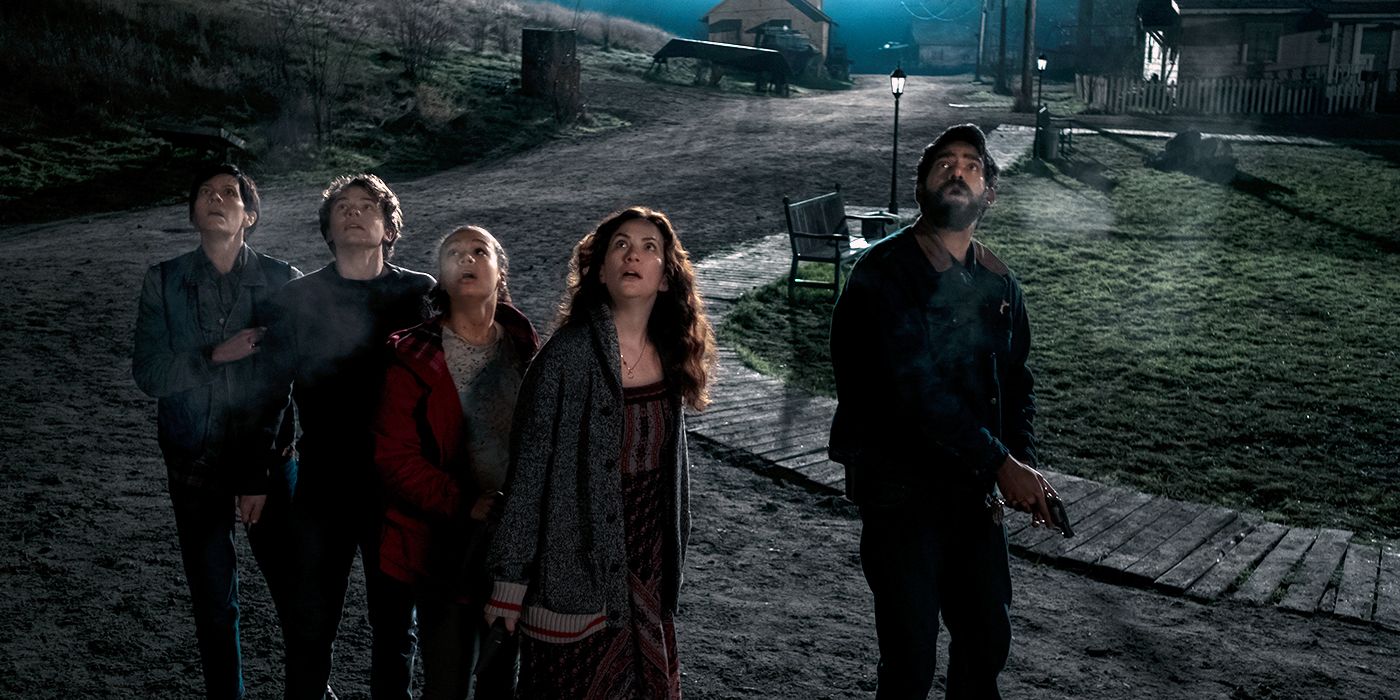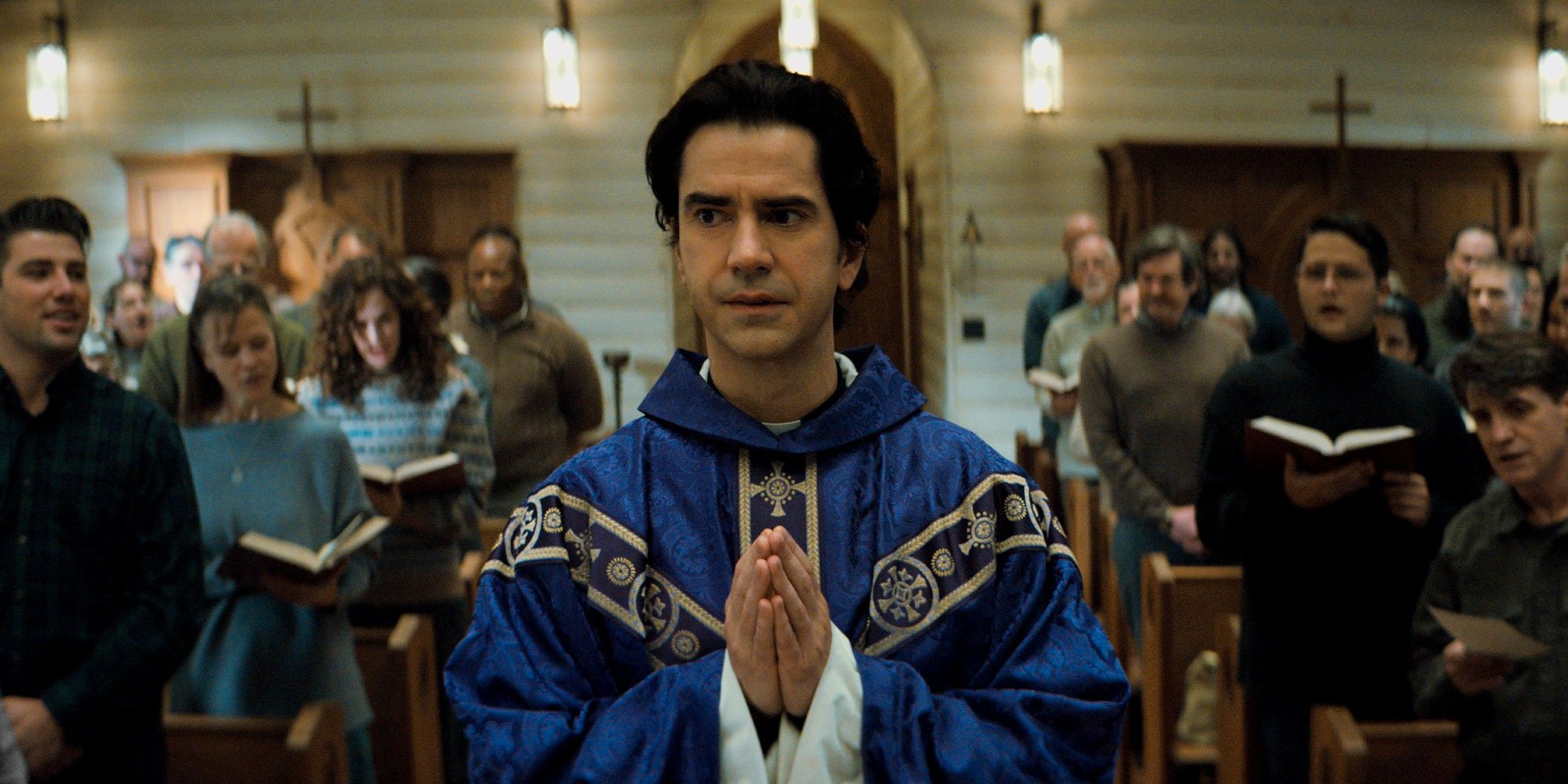
WARNING: The following contains spoilers for the entirety of Midnight Mass, streaming now on Netflix.
When creator Mike Flanagan first brought The Haunting of Hill House to Netflix in 2018, viewers looking for a spooky Halloween binge were in for a treat. The Haunting of Bly Manor two years later, featuring much of the same cast returning, made it clear that the first miniseries' quality was no fluke. But with Midnight Mass, Flanagan surpasses himself to present the best horror miniseries yet.
Though the previous projects were great, Midnight Mass improves on their flaws by deviating structurally in important ways.

There is much in common between the three series of The Haunting of Hill House, The Haunting of Bly Manor and Midnight Mass. There are of course surface similarities in casting, genre and thematic structure that unites them. Perhaps their greatest success is in elevating their material by using the horrors embodied in the story as allegorical stand-ins for the darkest parts of real life, be it the psychological impacts of trauma, self-acceptance, or even grappling with the existential threat of death itself. But as far as how well made the shows are, and how those themes are presented, Midnight Mass stands above the rest.
For starters, the pacing of the show carries its audience through its story dazzlingly well without ever slacking. Techniques in cinematography make even the most basic setups engaging to watch, with shots and reaction shots frequently closing in throughout a given conversation to reflect the intimacy between characters, or framing them so that negative space overpowers them into appearing small and ineffectual. These same techniques pull the Haunting minis along as well, yet both suffered from a compulsion to produce jump scares or flashes of a ghost seemingly for their own sake.
In Midnight Mass, Flanagan seems more secure in the quality of his cinematography, trusting the camera work and the performances of the actors in their frequent monologues to entertain the audience. In many ways, it escapes the expectations and conventions of the horror genre that could at times hamper the Haunting minis. It's entirely possible, throughout prolonged dialogue centering on beliefs about life after death or tragic backstories, to forget that Midnight Mass fits into a genre at all. At least some of that success owes itself to freedom in its narrative structure that diverges from its predecessors.
Both Hill House and Bly Manor focused episode by episode on a different character among their ensemble casts, and while the result was a unique experience that ensured each character had ample space it could also artificially restrict the growth of plot lines and arcs simultaneously. Midnight Mass does much more efficient work by compacting those characterizations into its dialogue, and there is never an episode where the viewer feels chained to a character they do not like. We know just enough about the relevant characters and relationships to keep the story going. It leaves the audience constantly wanting more, never twiddling their thumbs.

By this point, Flanagan is a well-established figure in the horror genre, but Midnight Mass is a strong contender for one of his best works yet. It carries with it a sense of development and growth that showed just how much the creator and his team learned from previous efforts. It's hard to imagine much more improvement, but if there are only more to come in the future then horror fans should already start licking their lips for the treats of future Halloweens.
All seven episodes of Midnight Mass are now available on Netflix.
0 Comments